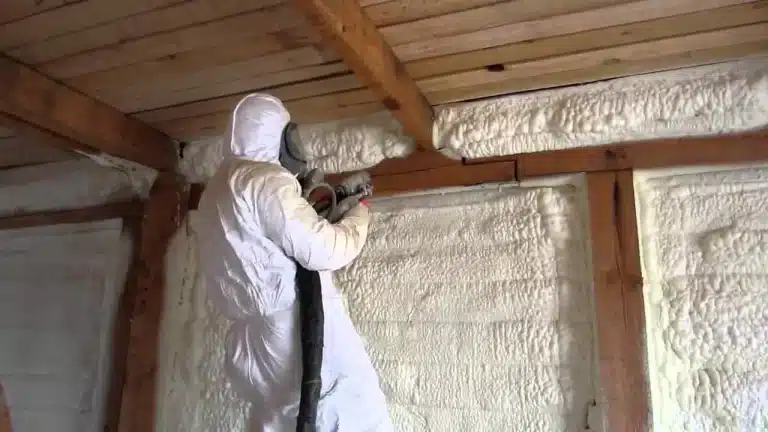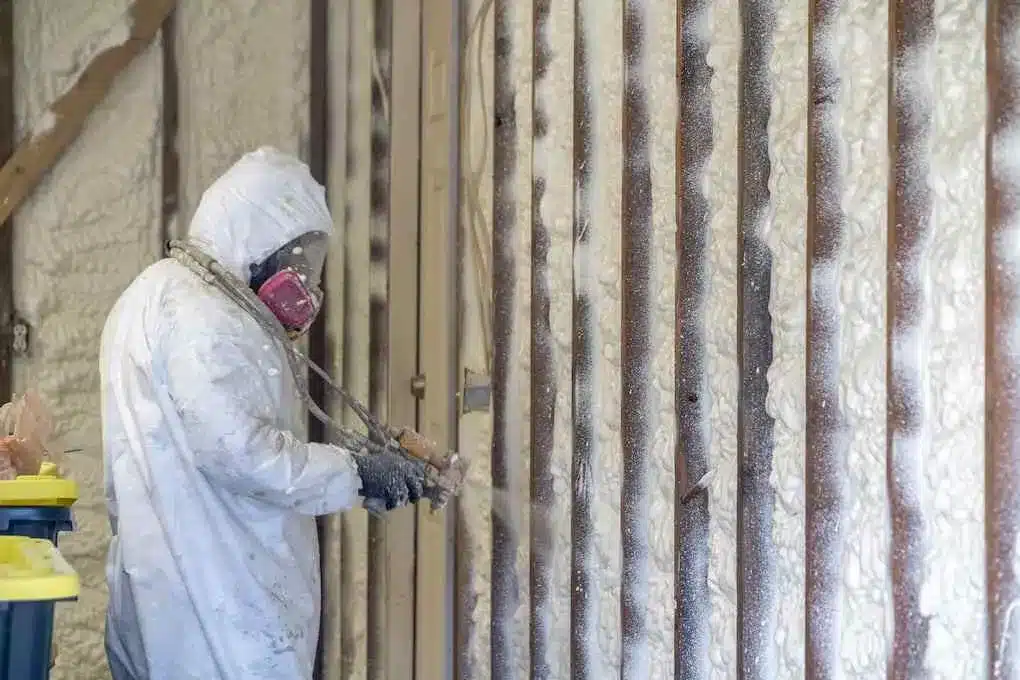Closed cell insulation offers limited practical value in Fresno, CA’s mild winters, where average temperatures range from 39°F to 50°F and rarely dip below freezing. Fresno’s moderate winter climate minimizes the need for closed cell foam’s high thermal resistance capabilities, which are more suited for colder regions.
Fresno winters are cooler and wetter than the region’s dry summers, but the relatively stable and mild temperature range means the superior R-value of closed cell spray foam often goes underutilized during winter months. Engineering analysis shows that this enhanced performance is rarely necessary when indoor and outdoor temperatures remain close.
Fresno, CA Winter Climate Analysis
Fresno’s coldest month, December, averages overnight lows of 37°F. Most nights rarely fall below 40°F, and only about 11 frost nights occur annually between November and February.
| Climate Factor | Fresno, CA Conditions | Closed Cell Benefits | Effectiveness Assessment |
| Average Winter Low | 37°F – 45°F | Over-performance | Low utilization potential |
| Frost Nights | 11 nights annually | Minimal impact period | Reduced effectiveness |
| Heating Degree Days | 2,650 annually | High thermal potential | Limited utilization |
| Moisture Concerns | Winter rain periods | Superior moisture control | Context-specific effectiveness |
Fresno’s Mediterranean climate narrows the performance gap between open and closed cell insulation during the winter, especially when compared to more extreme climates.
Performance Considerations for Mild Winters
Closed cell spray foam has an R-value of up to R-6.5 per inch, while open cell typically offers around R-3.7 per inch. In Fresno’s mild winters, this difference often provides minimal additional benefit, as the smaller temperature differentials reduce demand for maximum thermal resistance.
Thermal Performance Insight: Closed cell foam provides superior protection against conduction, convection, and radiant heat transfer. However, during Fresno’s winter season, the contribution of convection and radiation to heat loss is minimal, making the performance margin between insulation types less impactful.
Effectiveness Comparison Analysis
| Insulation Factor | Closed Cell Performance | Open Cell Performance | Effectiveness Gap in Mild Climate |
| R-Value per inch | R-6.5 | R-3.7 | Minimal impact at low temp differentials |
| Air Sealing | Excellent | Good | Both effective for mild conditions |
| Moisture Control | Superior | Moderate | Advantage maintained in wet periods |
| Temperature Stability | Stable to 250°F | Stable to 180°F | Both exceed Fresno requirements |
Moisture Management Considerations
Winter rainfall introduces legitimate moisture control concerns in Fresno. Closed cell foam’s vapor resistance offers effective protection, especially in areas prone to dampness or water intrusion. However, building envelope design and proper vapor barriers can also manage moisture effectively across most standard applications.
Bonus Tip: Use closed cell foam in moisture-prone locations such as crawl spaces or below-grade walls, and opt for alternative materials in standard thermal zones.
Alternative Winter Preparation Strategies
Rather than applying closed cell foam throughout an entire home, a targeted insulation strategy provides better performance outcomes in Fresno’s winter conditions.
Strategic Application Zones
Closed cell foam is best reserved for areas with high moisture exposure or structural needs. Standard walls, attics, and ceilings can often be insulated effectively with alternative materials, especially in mild climates.
Enhanced Air Sealing Focus
Air infiltration is a greater concern than heat loss in Fresno’s winter. Enhancing air sealing around windows, doors, rim joists, and attic penetrations provides noticeable comfort improvements.
Did You Know? Homes located south of the southern Pennsylvania border, including Fresno, CA, typically benefit more from open cell insulation due to their milder climates.
Effectiveness by Application Area
| Home Area | Closed Cell Effectiveness | Recommended Approach | Performance Justification |
| Attics | Moderate effectiveness | Alternative materials suitable | Limited temperature differential |
| Above-grade walls | Low effectiveness | Open cell or alternatives | Mild climate reduces thermal demand |
| Crawl spaces | High effectiveness | Closed cell recommended | Moisture control priority |
| Rim joists | High effectiveness | Closed cell beneficial | Air sealing and moisture control |
| Basements | High effectiveness | Closed cell appropriate | Below-grade moisture concerns |
Things to Consider Before Making a Decision
Home Age & Existing Insulation: Older homes may benefit from upgrades in areas that are under-insulated or poorly sealed. Newer homes often already meet insulation standards appropriate for Fresno’s climate.
Application-Specific Needs: While closed cell is effective in areas like crawl spaces, standard living areas may not need such robust material during winter.
Climate Trends: Long-term weather patterns and any future shifts in temperature extremes may influence the relevance of insulation choices.
Broader Efficiency Strategy: Many energy efficiency improvements—including air sealing and HVAC upgrades—offer complementary benefits in mild winter climates when combined with appropriate insulation.
Bonus Tip: In mild climates like Fresno, improvements to heating system performance often yield greater comfort enhancements than upgrades to insulation alone.
Common Questions
Q: Is closed cell foam needed for Fresno’s winter conditions? A: Not usually. Mild temperature drops and limited frost days reduce the need for its enhanced thermal properties.
Q: Where is closed cell insulation appropriate in Fresno homes? A: Use it in areas prone to dampness—such as crawl spaces, rim joists, and basements. Most above-grade walls and attics can be treated with other effective insulation options.
Q: Does closed cell perform better in extreme cold? A: Yes. Closed cell insulation is ideal for climates with sustained sub-freezing temperatures, which Fresno does not frequently experience.
Q: How can I improve winter comfort without overinsulating? A: Focus on air sealing, moisture control in key areas, and proper HVAC operation to optimize indoor comfort during winter.
Ready to Optimize Your Winter Insulation Strategy?
Closed cell insulation can be beneficial in Fresno, CA, but its winter performance advantage is limited by the region’s mild climate. A balanced approach—using it in high-moisture zones and complementing it with effective air sealing and ventilation—delivers the best results for comfort and efficiency.
Contact Supreme Spray Foam – Fresno for a professional insulation assessment tailored to Fresno’s unique winter conditions.
📞 (559) 545-0800 📧 [email protected]
Reviewer:
Emma Robinson contributed her expertise from over 8 years in the spray foam industry. Her insights helped shape this guide to reflect what truly matters for homeowners and contractors working in Fresno’s climate.











